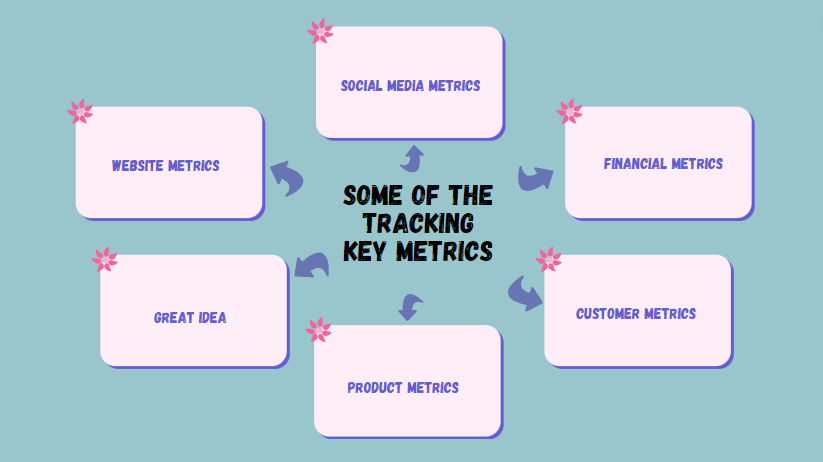Welcome to the realm of online video advertising! Video has emerged as the primary component of effective marketing strategies in the current fast-paced digital era. Video provides businesses with unmatched opportunities to engage with their target audience because of its capacity to captivate audiences and effectively convey messages. We’ll look at how to use video to increase brand awareness, captivate audiences, and encourage conversions in this guide. Prepare to unleash the full power of video marketing and grow your company to unprecedented heights!
Analytics and Measurement in Video advertising :
In the field of video marketing, analytics, and measurement are crucial because they offer priceless insights into audience engagement and campaign performance. Marketers can obtain a comprehensive understanding of how their videos are connecting with viewers by monitoring key performance indicators (KPIs) like views, watch time, engagement rates, and conversion metrics. With these insights, marketers can take data-driven decisions that improve the success of their video content, distribution strategies, and overall marketing activities. Targeting and personalization strategies can be further refined by delving into viewer demographics, device preferences, and geographic locations with the help of analytics tools. Through the utilization of analytics and measurement, marketers can consistently enhance their video marketing tactics, optimize return on investment, and successfully accomplish their business goals.
Why Are Video advertising Analytics Necessary for bussiness?
There are certainly many brands or businesses that make mistakes when they think that any type of video will work, but I’m sure that they don’t. Firstly, understanding your viewers’ motivations and methods for engaging with your content is essential to optimizing your video and inbound marketing strategy.
Video advertising analytics are essential for businesses for several reasons :
Measuring ROI :
Analytics provides information on the effectiveness of video marketing activities in terms of ROI. Businesses may use metrics such as engagement rates, conversion rates, and income from video campaigns to calculate the effectiveness of marketing initiatives and make data-driven decisions regarding plan modifications.
Understanding Audience Behavior :
Analytics provide useful data on viewer behavior, including drop-off points, interaction levels, and viewing patterns. In the end, this improves engagement and retention by helping businesses better understand their audience.
Optimizing Content :
Optimizing content in video marketing via analytics is crucial for businesses to boost engagement, conversions, and brand visibility. By analyzing audience behavior, businesses can tailor content for maximum impact, leading to better targeting and distribution strategies. This results in higher ROI and more effective marketing campaigns overall.
Refining Targeting and Personalization :
Video marketing analytics offer information on audience demographics, geographical areas, and watching devices. This information enables organizations to better segment their audience and offer personalized content that is tailored to the interests and preferences of various audience segments. The information offered allows businesses to better segment their audience and provide targeted content that caters to the interests & preferences of specific audience segments.
Identifying Opportunities for Improvement :
Businesses can use analytics to pinpoint areas where their video marketing strategies are either failing or performing poorly. Analytics help businesses make necessary improvements and optimize their campaigns for better results by highlighting areas that require improvement, such as low engagement rates, high drop-off points, or ineffective calls-to-action.
In conclusion, firms require video marketing analytics because they offer the information required to calculate return on investment, comprehend audience behavior, optimize content, improve targeting and personalization, and spot areas for development. These insights eventually lead to better results and the accomplishment of corporate goals.
Video Marketing Metrics :
Metrics related to video marketing are essential to evaluating how well video content performs and how effective it is at reaching marketing objectives. These measures cover a wide range of viewer engagement, reach, and conversion factors. Typical metrics for video marketing consist of:
View Count:
The aggregate number of views a video has received, indicating its total audience.
Watch Time:
The total duration of time visitors have spent watching the video; this indicates how interested they are.
Engagement Rate:
The proportion of viewers who engage with the video by liking, commenting, sharing, or taking other actions is known as the engagement rate.
Click-Through Rate (CTR) :
The click-through rate (CTR) is the proportion of viewers who click on a call-to-action (CTA) or link in a video and is used to determine conversion intent.
Conversion Rate :
The percentage of viewers who finish an action that is directly related to the video, like purchasing something or subscribing to a newsletter.
These metrics offer insightful information about how well video content performs, enabling marketers to enhance audience engagement, refine their approaches, and successfully meet their goals.
Tracking key metrics (e.g., views, engagement, conversion rates) :

Views:
Understanding total views: Evaluating the exposure and reach of video content as a whole.
Differentiating between paid and organic views: Determining the audience’s origins in order to assess the success of marketing campaigns.
Tracking changes in view trends over time: measuring audience interest and campaign performance by examining changes in view counts.
Engagement:
First and foremost, tracking metrics like shares, likes, and comments gives you an idea of how the audience is interacting with the content and feeling about it. High levels of interaction show that the video connects with viewers and encourages participation in the community. Also, examining the comments provides helpful feedback and enables future content strategy modifications. In the end, high levels of engagement encourage a closer bond between the audience and the brand, which increases campaigning and brand loyalty.
Conversion Rates:
In video marketing, conversion rates are essential because they represent how well viewers can become customers. Observing the number of viewers who complete desired actions after viewing, such as making a purchase or signing up for a service, is essential for tracking conversion actions. Accurate ROI evaluation is achieved by properly attributing conversions to specific video content or campaigns using tracking tools and analytics systems. Businesses may improve their marketing efforts and get quantifiable results by leveraging conversion data to refine content and methods.
Video marketing analytics :
In the field of video marketing analytics, it is crucial to use analytics to enhance and optimize video marketing strategies. Businesses may receive crucial insights into their video content’s performance by evaluating key metrics such as views, engagement, and conversion rates. These insights fuel data-driven decision-making, allowing for the production and dissemination of content tailored to specific audiences. To get the greatest results, marketers should use ongoing analysis to identify patterns, fine-tune methods, and test out new concepts. Businesses can adapt, adjust, and survive in a dynamic digital world by leveraging analytics in video advertising
Conclusion:
Measurement and analytics are essential tools for negotiating the challenging terrain of video marketing. Through accurate observation of critical indicators like views, interaction, and conversion rates, companies can acquire priceless knowledge about how well their campaigns and video content are working. With the help of these insights, marketers can make data-driven decisions and improve strategies, content, and distribution channels in order to better connect with their target market. Furthermore, by using these metrics to guide ongoing analysis and adaptation, businesses can stay ahead of the constantly changing digital landscape and foster continuous innovation and improvement. In conclusion, companies can maximize return on investment, generate meaningful engagement, and effectively and precisely accomplish their marketing goals in the ever-changing field of video marketing by utilizing analytics and measurement.
Frequently asked questions:
1. What are the key metrics used to measure the performance of video marketing campaigns?
Click-through rate (CTR), social sharing, engagement rate, view count, and watch time are all important campaign metrics for video marketing. These metrics measure the effectiveness of calls to action, audience engagement, and retention, providing insightful information on the effectiveness of the campaign and ROI (return on investment).
2. How do you determine the success of a video campaign?
A video campaign’s effectiveness is determined using key performance indicators (KPIs) like view count, watch time, engagement rate, click-through rate (CTR), conversion rate, and return on investment. Evaluating qualitative aspects such as audience feedback, brand sentiment, and how well campaign objectives align with business goals also aids in determining overall effectiveness. A successful video campaign ultimately accomplishes its goals, whether it be increasing sales, traffic, or brand awareness, all while providing a favorable return on investment.
3. Which platforms provide analytics tools for tracking video campaign performance?
The most significant social media networks, such as Facebook, Instagram, LinkedIn, Twitter, YouTube, and Facebook, provide extensive analytics tools for monitoring the effectiveness of video campaigns. These resources offer insightful information about metrics like views, interaction, audience demographics, and traffic sources. Companies may evaluate the effectiveness of their video campaigns and improve their tactics to increase engagement and meet their marketing goals by utilizing these analytics.
4. Which platforms provide analytics tools for tracking video campaign performance?
Analytics tools are available for monitoring the performance of video campaigns on YouTube, Facebook, Instagram, LinkedIn, Twitter, and other popular platforms. Insights into important metrics like views, engagement, traffic sources, and demographics are provided by these tools. Through the utilization of these analytics, companies can evaluate the efficacy of their campaigns, pinpoint opportunities for enhancement, and fine-tune their approaches to maximize outcomes and accomplish marketing goals.
5. What are some common challenges in interpreting video campaign metrics?
There are several challenges to overcome when interpreting video campaign metrics, including the intricacies of attribution, the precision of evaluating engagement quality, platform inconsistencies, and the requirement for contextual knowledge. Careful analysis, benchmarking against industry norms, and the establishment of relevant goals to maximize campaign effectiveness are necessary to overcome these obstacles.

